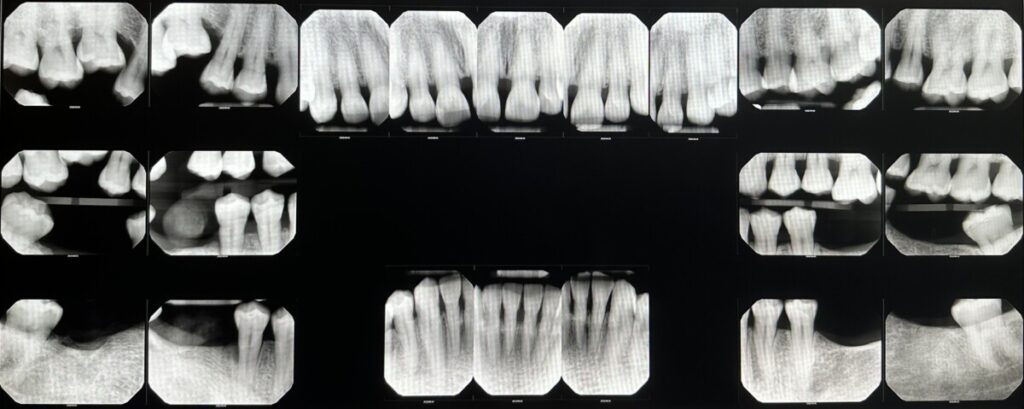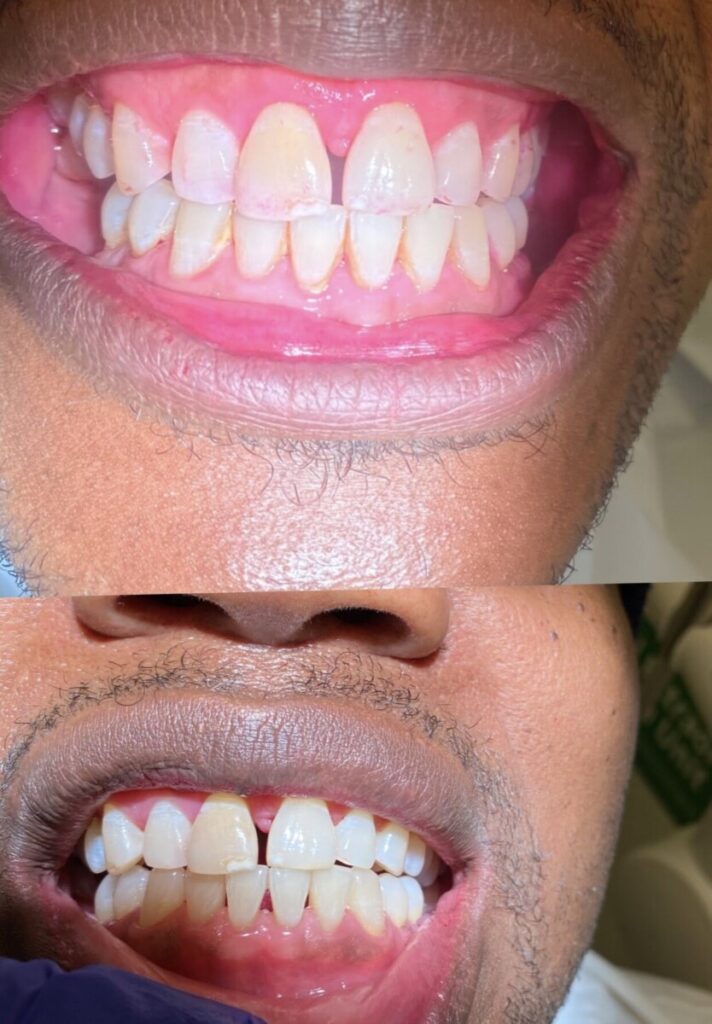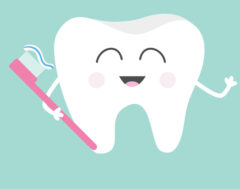a 51 year-old Black male presented with normal blood pressure and moderate dental anxiety. He has hypothyroidism after undergoing thyroidectomy and takes levothyroxine for this condition every day as prescribed. This patient also takes OTC iron supplements for deficiency. This patient has poor oral hygiene which consists of brushing 1x a day, no flossing or rising, but he is motivated to change that.
Upon extra and intra oral evaluation, the patient presented with fixed nodules on the left side of the cervical region which he is aware of and has gotten evaluated. An FMX radiograph was exposed to examine bone loss, caries and other PA pathologies that may be visible on the radiographs. Patient presented with generalized horizontal bone loss (>15%) especially in the areas in which he had the most plaque and calculus build-up (mandibular anteriors-L and max molars-B) which are the most common areas due to salivary gland secretions.

Visit #1: During the first visit the main focus was patient education and creating an appropriate home care plan for the patient. I recommended an electric toothbrush for plaque control and an antiseptic mouth-wash. Patient said he also wanted to include a manual toothbrush in his routine, so I taught him the modified Bass technique, and demonstrated how to use an electric toothbrush on the typodont. I emphasized cleaning thoroughly cleaning around tooth #3 which presents with infraversion and can accumulate more biofilm. has During this visit scaling and root planing was done on Q1 and Q4 to completion.
Visit #2: During this visit, home care was reviewed, Plaque accumulation decreased and patient brought in his own electric toothbrush and demonstrated he has been using it correctly. During this visit, flossing was introduced and the patient was able to demonstrate the technique correctly. The previously treated are (Q1 and Q4) showed appropriate healing since the gums were less inflamed and more resilient than during his first visit. There was residual and new-formed calculus in the areas previously scaled. After assessing the patient and discussing the findings Q2 and Q3 were scaled to completion. Arestin was placed in Q1 and Q4 after reprobing and seeing no improvements in the pockets after scaling and root planing.

Visit #3: During this visit, the sites in which Arestin was placed were checked, 3 of the 4 pocket depths decreased by 1-2mm, while one site remained the same depth after the treatment. Patient was getting better at removing plaque daily, since build-up was not as apparent as in previous visits. Patient left very satisfied after the last visit.



